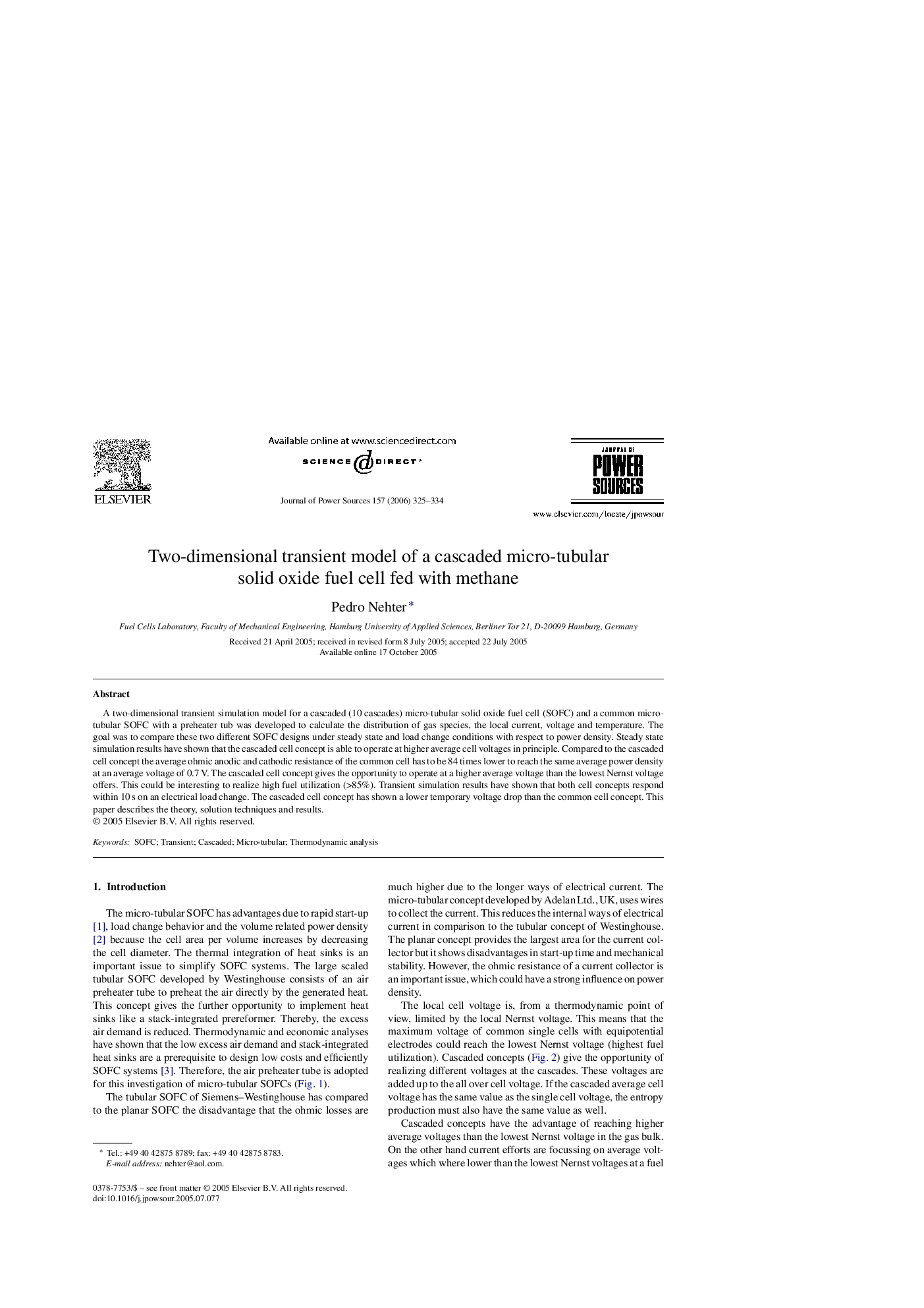| Article ID | Journal | Published Year | Pages | File Type |
|---|---|---|---|---|
| 1292678 | Journal of Power Sources | 2006 | 10 Pages |
Abstract
A two-dimensional transient simulation model for a cascaded (10 cascades) micro-tubular solid oxide fuel cell (SOFC) and a common micro-tubular SOFC with a preheater tub was developed to calculate the distribution of gas species, the local current, voltage and temperature. The goal was to compare these two different SOFC designs under steady state and load change conditions with respect to power density. Steady state simulation results have shown that the cascaded cell concept is able to operate at higher average cell voltages in principle. Compared to the cascaded cell concept the average ohmic anodic and cathodic resistance of the common cell has to be 84 times lower to reach the same average power density at an average voltage of 0.7Â V. The cascaded cell concept gives the opportunity to operate at a higher average voltage than the lowest Nernst voltage offers. This could be interesting to realize high fuel utilization (>85%). Transient simulation results have shown that both cell concepts respond within 10Â s on an electrical load change. The cascaded cell concept has shown a lower temporary voltage drop than the common cell concept. This paper describes the theory, solution techniques and results.
Related Topics
Physical Sciences and Engineering
Chemistry
Electrochemistry
Authors
Pedro Nehter,
